By: Eric Siegel, Founder, Predictive Analytics World
In anticipation of his upcoming conference presentation, The Revolution in Retail Customer  Intelligence, at Predictive Analytics World Chicago, June 8-11, 2015, we asked Dean Abbott, Co-Founder and Chief Data Scientist of Smarter Remarketer, a few questions about his work in predictive analytics.
Intelligence, at Predictive Analytics World Chicago, June 8-11, 2015, we asked Dean Abbott, Co-Founder and Chief Data Scientist of Smarter Remarketer, a few questions about his work in predictive analytics.
Q: In your work with predictive analytics, what behavior do your models predict?
A: I’ve built models that predict a wide variety of behaviors and patterns. A short list is provided here:
- Customer behavior: response, churn, product up-sell and cross-sell, best marketing creative, days to next purchase, days to next visit;
- Signals (radar): tank, truck column of tanks; (sonar): man-made vs. biologic;
- Financial: fraud or suspicion of fraud, debt repayment period, debt repayment amount, insurance claim repayment likelihood, claim amount of repayment.
Q: How does predictive analytics deliver value at your organization? What is one specific way in which it actively drives decisions?
A: I’ll speak to Smarter Remarketer, Inc., the company I’m Co-Founder of and Chief Data Scientist. There is no one specific way our predictive models drive decisions, but they are involved in the decision-making process in several ways, all related to selecting customers to promote to, whether that be selecting customers to send an email to, show a display ad, or present content on a page that is of greater interest to the customer.
Consider our models that predict the likelihood that someone will purchase a product during a visit to the company’s web site within 3 days. Each visitor is scored while they browse on the website and at the end of their session. The company now wants to create a new campaign to increase sales of a particular product by emailing them a promotion code with a 20% discount. If the customer is likely to purchase a product on the web site within 3 days, the models will exclude these customers from the email list; why take away margin from sales that are likely to occur anyway. Or what if a customer was very likely to purchase within 7 days last week but is no longer likely this week? This is a form of churn (but based on expected behavior, not actual behavior), and these customers could be given incentives to visit again.
Q: Can you describe a successful result, such as the predictive lift of your model or the ROI of an analytics initiative?
A: It is difficult to describe most of the results my models have generated because they are considered sensitive information for the company or government agency. I’ve had models in use by organizations for 10 years before they were refreshed. I’ve had another model so successful that it was put on the “do not tell” list by the organization because it became a strategic initiative for the organization. I’ve had fraud models identify multi-million dollar cases to investigate that were clearly fraud but had previously eluded detection.
Q: What surprising discovery have you unearthed in your data?
A: Most surprising? There have been many surprises over the years, usually related to the data itself and patterns of behavior that we may overlook, but are important nevertheless. For example, with the days to next purchase models, one expects that visitors on a website who look at lots of hot products are more likely to purchase soon; these are engaged visitors. However, it turns out that some of the most likely purchasers are those who visit just one item. The vast majority of the time, one-item visitors are not engaged and therefore are unlikely to purchase. But, if these one-item visitors were previously highly engaged, it’s a different story; they are focused like a laser beam on one product only. So the surprise was that there is this subset of visitors who look awful but are actually fantastic!
Q: Sneak preview: Please tell us a take-away that you will provide during your talk at Predictive Analytics World.
A: The most important take-away in my talk is this: When you prepare data for modeling, think about how the algorithms interpret the data. Each algorithm has weaknesses that can result in strange or misleading behavior. It’s our job as predictive modelers to help the algorithms do the best job they can.
Q: In addition to keynoting, you will be teaching two one-day workshops at PAW Chicago, Supercharging Prediction with Ensemble Models and Advanced Methods Hands-on: Predictive Modeling Techniques. How would you advise attendees to choose between these workshops and would it even make sense to attend both?
A: There are many workshop options, and all of them are worthy of attending. I think of the Supercharging and Advanced Methods workshops as complementary to your Online Introduction to predictive and John Elder’s Modeling Methods, with the sequence being (1) Intro, (2) Modeling Methods, (3) Advanced Methods, and (4) Supercharging. The Modeling Methods can be taken the day before Advanced Methods in the same conference; Modeling Methods provides a framework for predictive modeling, and Advanced Methods lets you try it out on commercial software. Supercharging takes predictive modeling to the next level, introducing the methods that win modeling competitions and have provided me with extra accuracy has made the difference between successful models and very successful models in my consulting practice.
———————
Don't miss Dean Abbott’s conference presentation, The Revolution in Retail Customer Intelligence, and workshops at Predictive Analytics World Chicago on Tuesday, June 9, 2015 from 10:30-11:15 am. Click here to register for attendance.
By: Eric Siegel, Founder, Predictive Analytics World
